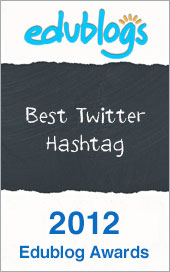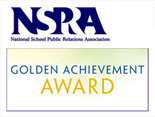EGUSD Digital Citizenship Curriculum
EGUSD has adopted digital citizenship – Internet safety curriculum for grades K-12. The below Common Sense Media lessons specifically address cyberbullying and are age appropriate for middle and high school students.
Middle School Curriculum
Lesson 1: Cyberbullying: Crossing the Line
- Essential Question: When does inappropriate online behavior cross the line to cyberbullying, and what can you do about it?
- Overview: Students learn to distinguish good-natured teasing from cyberbullying. Students learn about serious forms of cyberbullying, which include harassment, deception, “flaming,” and threats to safety.
- Download the lesson
Lesson 2: Cyberbullying: Be Upstanding
- Essential Question: How do you judge the intentions and impact of people’s words and actions online?
- Overview: Students learn about the difference between being a passive bystander versus a brave upstander in cyberbullying situations.
- Download the lesson
High School Curriculum
Lesson 1: Turn Down the Dial on Online Cruelty – (Grades 9-10)
- Essential Question: What factors intensify cyberbullying and online cruelty, and what can you do to lessen them?
- Overview: Students learn that cruelty can escalate quickly online because people are often anonymous and posts spread quickly.
- Download the lesson
Lesson 2: Taking Perspectives – (Grades 11-12)
- Essential Question: How does online cruelty affect the people involved?
- Overview: Students learn about the dynamics of online cruelty and how it affects all of the people involved.
- Download the lesson
Cyberbullying Resources
Cyberbullying Videos from the Cyberbullying Research Center – Good resource for teachers/staff – Cyberbullying topics broken out into short 30 second – 5 minute increments.
District Bullying Policies
The Board of Education believes that all students have a right to a safe and healthy school environment.
Cyberbullying: The Board finds that bullying takes place through the Internet or other forms of technology and electronic acts, i.e., cyberbullying. Cyberbullying includes the transmission of harassing communications, direct threats, or other harmful texts, sounds, or images on the Internet, social media, or other technologies using a telephone, computer, or any wireless communication device. Cyberbullying also includes breaking into another person’s electronic account and assuming that person’s identity in order to damage that person’s reputation.
Link to EGUSD Board Policy – 5131.2
Link to Board Policy 5145.3 Nondiscrimination/Harassment
District Policy Prohibiting Discrimination/Harassment/Intimidation/Bullying of Students (Notification Poster)
English
Hmong
Spanish
Vietnamese
California Law
- SB 1177 – September 2014 – Student Online Personal Information Protection Act (SOPIPA) – The most comprehensive industry-targeted student-data-privacy legislation in the country. The law, spearheaded by Common Sense CEO Jim Steyer, is the most aggressive legislative effort to date aimed at protecting the privacy and security of student data. The law is unique in that puts the responsibility for protecting student data directly on industry by expressly prohibiting education technology service providers from selling student data, using that information to advertise to students or their families, or “amassing a profile” on students to be used for noneducational purposes. Law took effect in January 2016. (Source: Commonsensemedia.org)
- AB 1584 – September 2014 – Existing law prohibits a school district from permitting access to pupil records to any person without parental consent or without a judicial order, except to specified persons under certain circumstances, including to a contractor or consultant with a legitimate educational interest who has a formal written agreement or contract with the school district regarding the provision of outsourced institutional services or functions by the contractor or consultant.
- AB 1442 – September 2014 – Existing law requires school districts to establish, maintain, and destroy pupil records according to regulations adopted by the State Board of Education.
- This bill would, notwithstanding that provision, require a school district, county office of education, or charter school that considers a program to gather or maintain in its records any information obtained from social media, as defined, of any pupil enrolled in the school district, county office of education, or charter school to first notify pupils and their parents or guardians about the proposed program, and to provide an opportunity for public comment at a regularly scheduled public meeting before the adoption of the program.
- AB 256 – Chapter 700 – October 10, 2013 – Clarifies the role of school in intervening in bullying cases that originate away from school. Bill defines “electronic act” the creation and transmission originated on or off the school site.
- AB 1156 – July 2012 – Outlines a number of provisions regarding bullying including identification of negative outcomes associated with bullying; duties of school personnel regarding bullying; and accommodations of victims of bullying.
- AB 9 (Seth’s Law) – January 2012 – Even with AB 746 in place (see below), California legislators recognized the need to have anti-bullying policy in place to protect LBGTQ youth from harassment, intimidation, and bullying. To find resources for supporting LBGTQ youth, visit the Digital ID project.
- AB 746 – July 2011 – Language of the law includes student behaviors on social networking web sites: “Under existing law, bullying, including bullying committed by means of an electronic act, as defined, is a ground on which suspension or expulsion may be based.”
- AB 86 – January 2009 – One of the first laws in the country to deal directly with cyberbullying. Gives school administrators the authority to discipline students for bullying others offline or online.
Federal Law
- CIPA – Children’s Internet Protection Act (2001)
Enacted by Congress in 2000 to address concerns about children’s access to obscene or harmful content over the Internet. As of July 2012, CIPA requirements were revised to require that any school district applying for E-Rate funding* must show how they are actively teaching all students Internet safety and digital citizenship. The topics that must be covered are: Appropriate online behavior (building a positive digital footprint; respecting intellectual property), safety and privacy, and cyberbullying awareness and response*EGUSD uses E-Rate funding for:- Telecommunications – Voice communications, voice mail, or messaging.
- Internet Access – Internet access and the power of video conferencing (making global connections possible from all school sites).
- Infrastructure – Extending connectivity down to every classroom.
As with any federal program that comes with funding, our district-wide implementation of CIPA requirements is subject to federal audits.
COPPA – Children’s Online Privacy Protection Act (1998)
Federal law created to protect the privacy of children under 13. The Act was passed by the U.S. Congress in 1998 and took effect in 2000. COPPA is managed by the Federal Trade Commission. COPPA imposes certain requirements on operators of websites or online services directed to children under 13 years of age, and on operators of other websites or online services that have actual knowledge that they are collecting personal information online from a child under 13 years of age.PPRA – Protection of Pupil Rights Amendment (1978)
Federal law that affords certain rights to parents of minor students with regard to surveys that ask questions of a personal nature. The No Child Left Behind Act of 2001 contains a major amendment to PPRA that gives parents more rights with regard to the surveying of minor students.FERPA – Family Educational Rights and Privacy Act (1974)
Federal law that protects the privacy of student education records. The law applies to all schools that receive funds under an applicable program of the U.S. Department of Education.Revision – School official exception (2008)
Permit educational institutions to disclose educational information and personally identifiable information without prior consent to contractors, volunteers or other non-employees peforming services for the educational institution.Revision – Audit or evaluation exception (2011)
Educational institutions are now permitted to adopt a limited directory information policy that allows the schools to disclose designated information to designated parties. Educational institutes however, must provide notice to parents or eligible students.
#UnfollowBullying Presentation
Prezi is a cloud-based presentation software that opens up a new world between whiteboards and slides. The zoomable canvas makes it fun to explore ideas and the connections between them. The result: visually captivating presentations that lead your audience down a path of discovery. The Internet Safety Task Force designed a prezi to showcase the #UnfollowBullying student-led campaign to staff. You are welcome to share this presentation with your colleagues and students. You can use any Internet browser to navigate the presentation.
The #UnfollowBullying Campaign and tools to help you understand the lingo…

What does the “#” hashtag in the campaign name mean?
The # (hashtag/pound symbol) is used in Twitter and other social media websites to comment about a particular topic so people searching for it can easily find it.
Twitter 101
Q & A
Q. What is Twitter?
A. Twitter is an online social media service that is often referred to as “micro-blogging” because each “Tweet” (text-based message) has a limit of 140 characters. Micro-blogging allows users to exchange small elements of content such as short sentences, individual images, or video links.
Q. Why do educators use Twitter?
A. Twitter can provide a Personal Learning Network (PLN), accessible 24/7 , where educators share articles, classroom activities, suggestions, humor, and more – in 140 characters or less! Once you have set up an account (directions listed below), you can follow education visionaries such as David Warlick, Vicki Davis, Will Richardson, Steven Anderson, and Larry Ferlazzo.
Q. Are students using Twitter for ecucational purposes?
A. Absolutely. Check out KQED’s Do Now project. Do Now is a weekly activity for students to engage and respond to current issues using social media tools like Twitter. KQED aims to introduce 21st Century skills and add value to learning through the integration of relevant local content and new media tools and technologies. The project gives students a chance to practice civic engagement and digital citizenship skills while they explore ways to connect topics in their classes to the present day.
Q. How about a tour of Twitter?
A. Here you go:
Q. How about a video tutorial?
A. Sure. Here’s a 5-minute video from educator Matthew Fratalli:
Q. Want more Twitter training videos?
A. View Mashable Social Media’s Top 7 Twitter Tutorials on YouTube.
Q. Is there a way to remove an inappropriate Tweet from our school Twitter page:
A. Yes. Just follow these steps from the Twitter Help Center.
Q. Looking for a complete comprehensive guide to Twitter?
A. Check out Mashable’s Guide Book on Twitter
Q. Perhaps a selection of videos and articles on Twitter in education?
A. Edutopia’s Five-Minute Film Festival: Twitter in Education features videos and articles.
Q. How about a one-page introduction to Twitter?
A. We’ve created this one-page (double-sided) Beginner’s Guide to Twitter just for you.
Q. Do you have some sample Tweets for the campaign?
A.Yes, see below.
Draw a Line – Delete negative or hateful comments rather than giving the bully an audience. #UnfollowBullying
(112 characters)
Speak up for yourself and for others; don’t let fear silence you. #UnfollowBullying
(82 characters)
Consider Others – When online, ask yourself are you sending something you would say face-to-face? If not, don’t send it. #UnfollowBullying
(138 characters)
EGUSD Student Generated Samples
- Don’t hate, elevate. #UnfollowBullying
- Be better than the bully. #UnfollowBullying
- Kind intentions with the mentions. #UnfollowBullying
- Use 140 characters for change. #UnfollowBullying
- Think before you tag. #UnfollowBullying
- Don’t be that one kid #UnfollowBullying
- Class of 2013 agrees to #UnfollowBullying… so you should too!
- It takes one tweet to start a trend #UnfollowBullying @School
- Be sweet with your tweet. #UnfollowBullying
- Don’t be bitter on Twitter. #UnfollowBullying
- Tweet others as you would like to be Tweeted. #UnfollowBullying
- Follow the trend… #UnfollowBullying @School
- Don’t follow the crowd! #UnfollowBullying
Glossary of Basic Twitter Terms:
- Tweet: A post made on Twitter by a user.
- Twitterer/Tweeter: Someone who uses Twitter.
- Follow: When you “follow” someone on Twitter, their Tweets appear in your Twitter stream. You can choose to follow anyone.
- Follower: Someone who is reading your Tweets. Anyone can follow you – no invitation needed.
- Unfollow: At any time, you can choose to stop following someone. Their Tweets will no longer appear in your Twitter stream.
- RT (Retweet): Reposting something that has already been posted on the Twitter stream that you find noteworthy. ReTweeting is a way to give credit to other tweeters.
- @ Reply: The @ symbol is used to reply to a Twitter user.
- # (Hashtag): The pound symbol is used to comment about a particular topic so that people searching for it can easily find it. If you search for #UnfollowBullying, you can view all Tweets on that topic.Hashtags are also used to tag and follow specific groups that sponsor weekly live Twitter sessions on current education topics. Many English teachers, for instance, connect via Twitter every Monday at 7 PM EST to share ideas, resources and inspiration on #engchat. Social Studies teachers join synchronous discussions on #sschat and math teachers connect through #mathchat. For a more extensive list of #EdChats, check out Cybraryman’s list.
- DM (Direct Message): You have the option of sending any of your followers a private message (a DM). Only the person you send the DM to will see it, but they must be already following you in order to DM them.
- Trending Topics: The hottest topics of discussion on Twitter. For instance, during the Emmy Awards, if everyone started tweeting about them with the hashtag (#Emmys), the Emmys would become a trending topic.
Graphics – School Loop #UnfollowBullying Logo/Badges
Place an #UnfollowBullying logo or badge on your school’s website and link them to the EGUSD #UnfollowBullying website.

Large .PNG | Small .PNG | Large .JPG | Small .JPG

Download Student-Led Anti-Cyberbullying Campaign Badge

Download “Be a Role Model” Badge

Download #UnfollowBullying @ElkGrove Unified Badge

Download #UnfollowBullying Website URL Badge
Download “Be a Role Model” Website URL Badge
Speech Bubble Graphics
Downloadable blank speech bubble graphics from the #UnfollowBullying logo to include in your campaign projects.

Blue Bubble .PNG | .JPG
Pink Bubble .PNG | .JPG
Yellow Bubble .PNG | .JPG









